Here you will find a collection of fun and engaging spot the difference puzzles designed to entertain and challenge kids and adults alike. Whether you’re looking for a quick brain teaser or a fun activity for a rainy day, our printable puzzles are perfect for all ages.

How to Play
- Print the Puzzles: Choose your favorite spot the difference puzzle and print it out.
- Compare the Images: Look at the two images side by side. They may seem identical at first glance, but there are several subtle differences between them.
- Spot the Differences: Use a pen or pencil to circle the differences in the second image.
- Check Your Answers: Once you’ve found all the differences, check your answers with the solution provided.
Benefits of Spot the Difference Puzzles
- Enhances Attention to Detail: Spotting differences requires careful observation and attention to detail, helping to improve these skills.
- Boosts Concentration: These puzzles are a great way to enhance concentration and focus, as they require sustained attention to find all the differences.
- Encourages Critical Thinking: Analyzing the images to spot differences helps develop critical thinking and problem-solving skills.
- Provides Relaxation and Fun: These puzzles offer a relaxing and enjoyable activity that can be done alone or with family and friends.
Printable Puzzles for All Ages
We have a wide variety of spot the difference puzzles suitable for all ages, from simple puzzles for young children to more challenging ones for older kids and adults. Explore our collection and find the perfect puzzle for you! Happy puzzling!
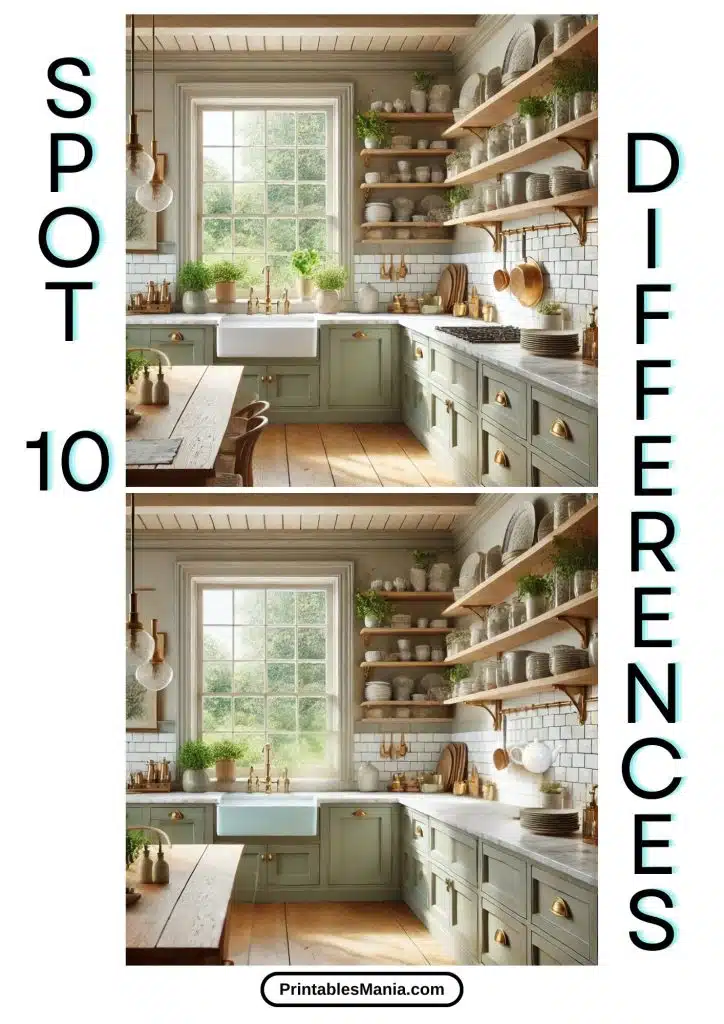
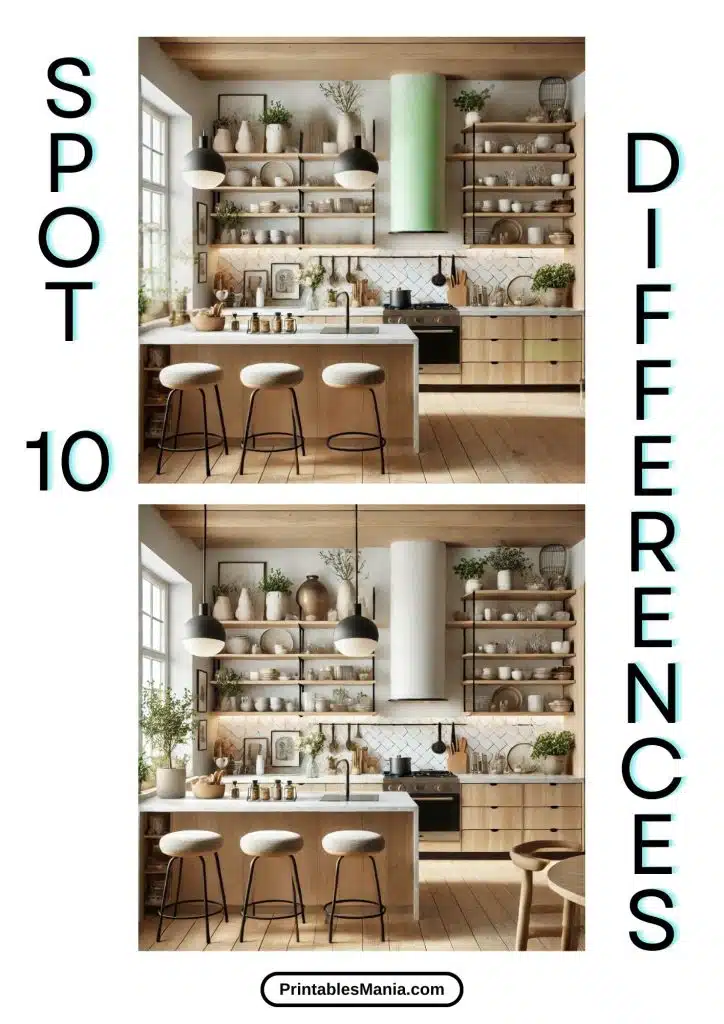
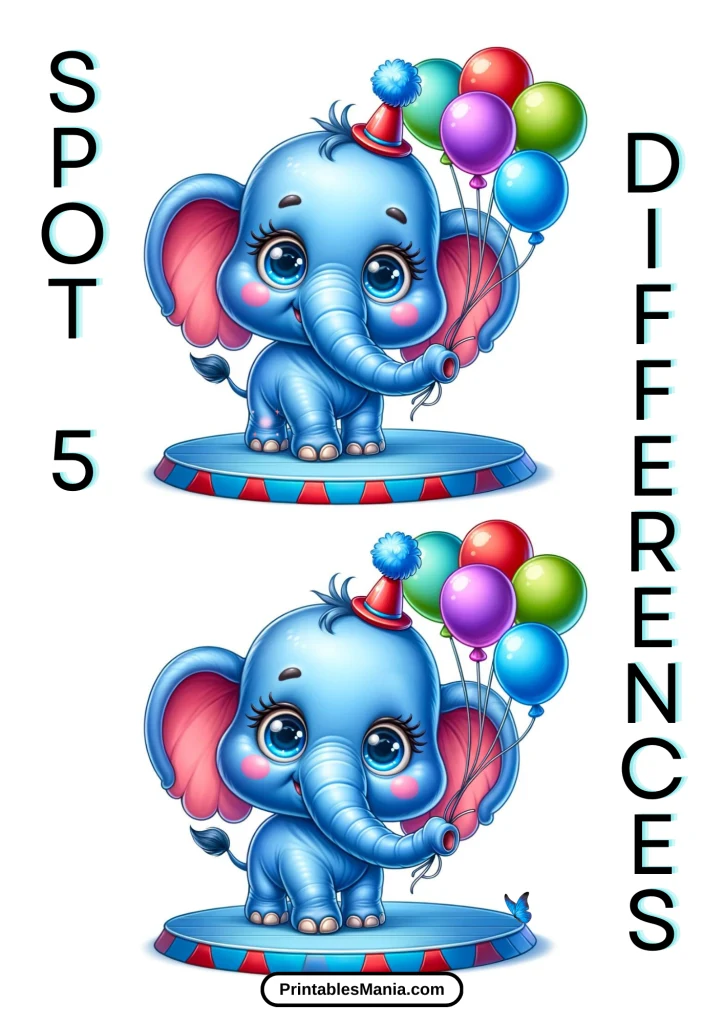
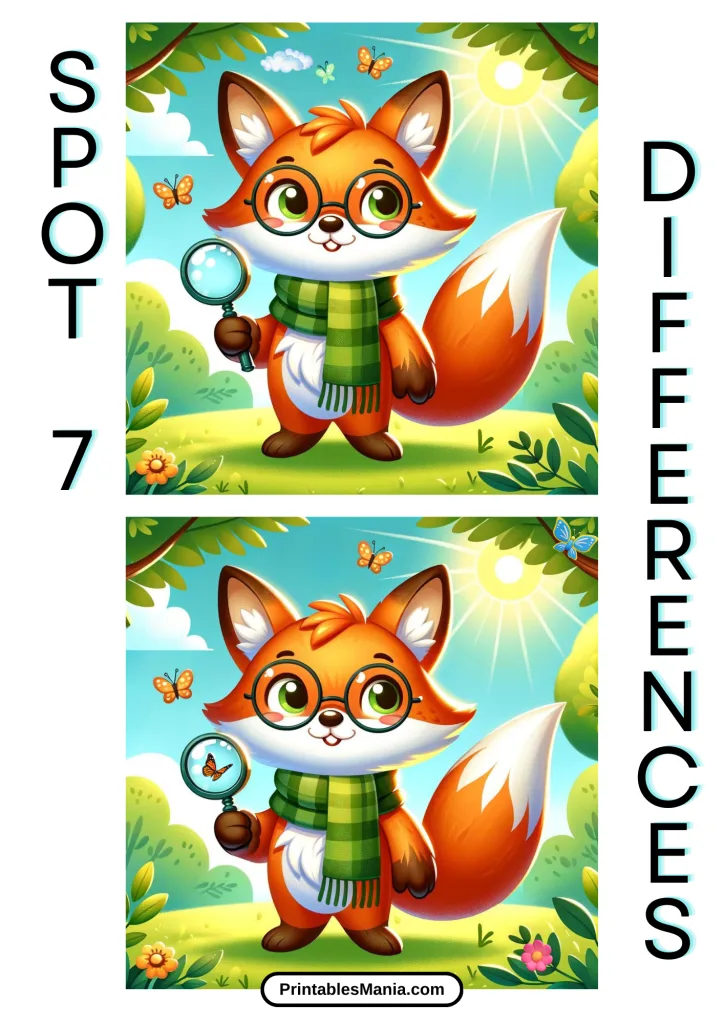
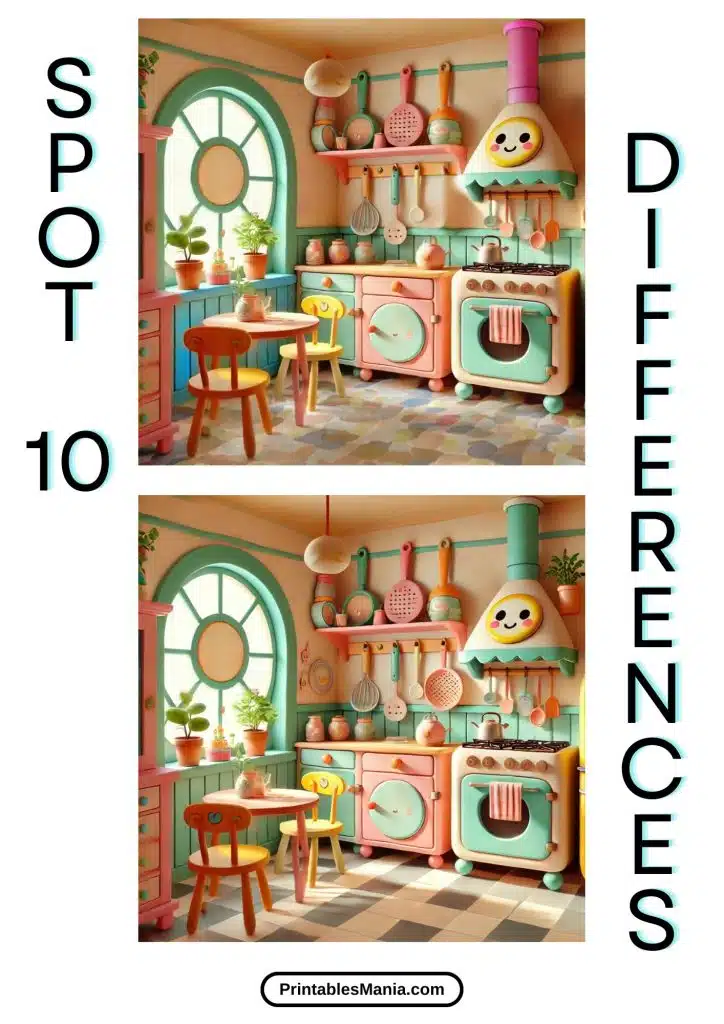
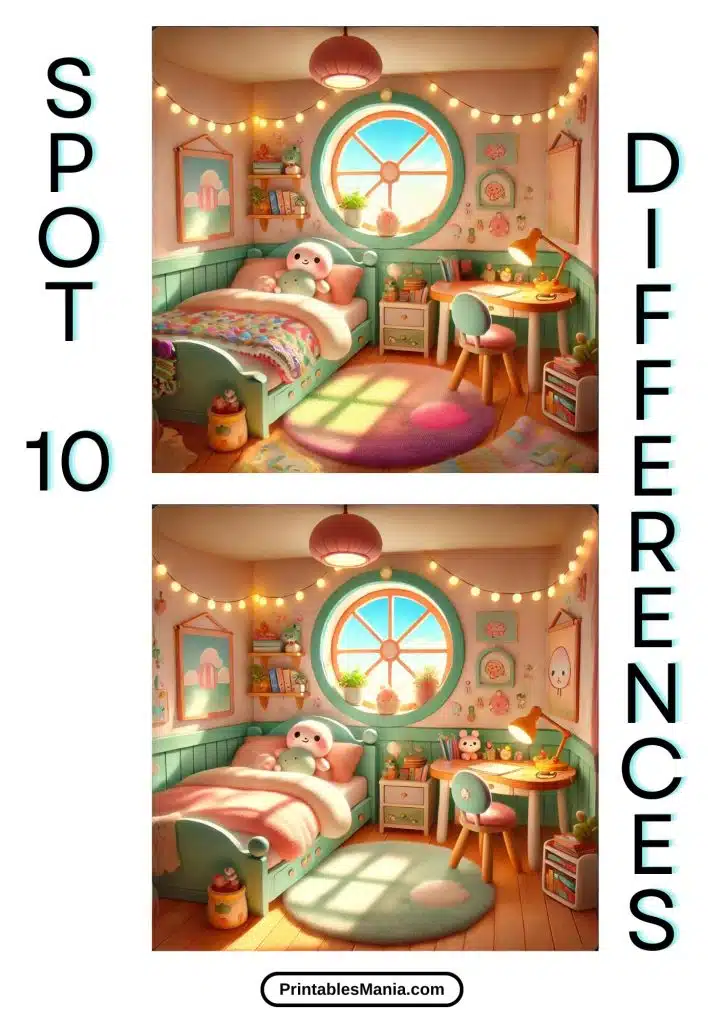
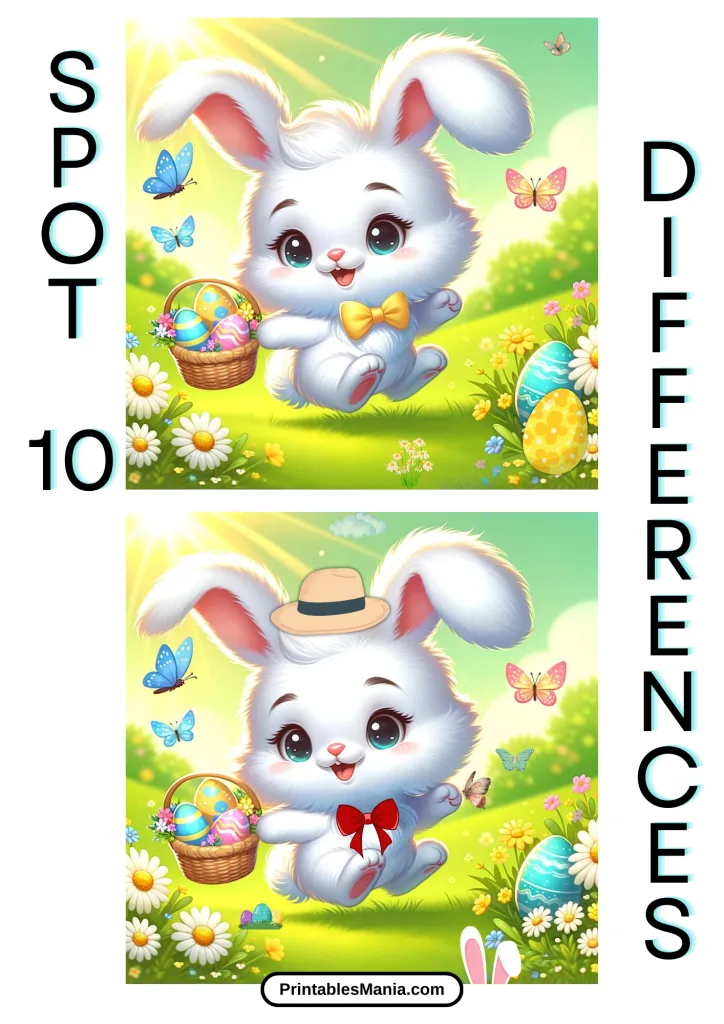
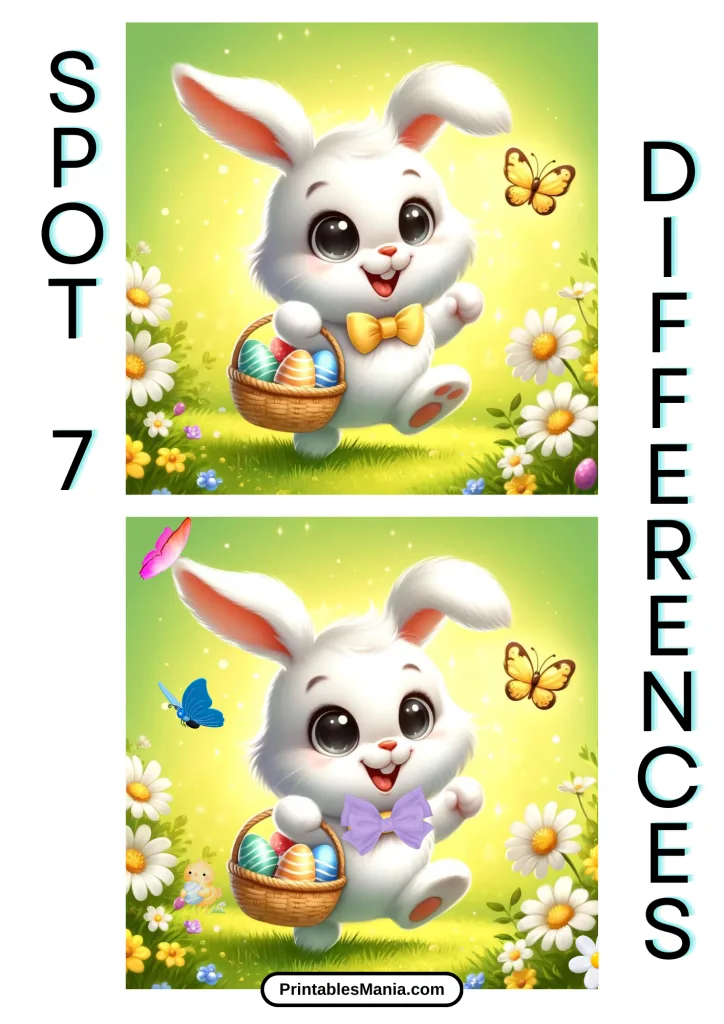
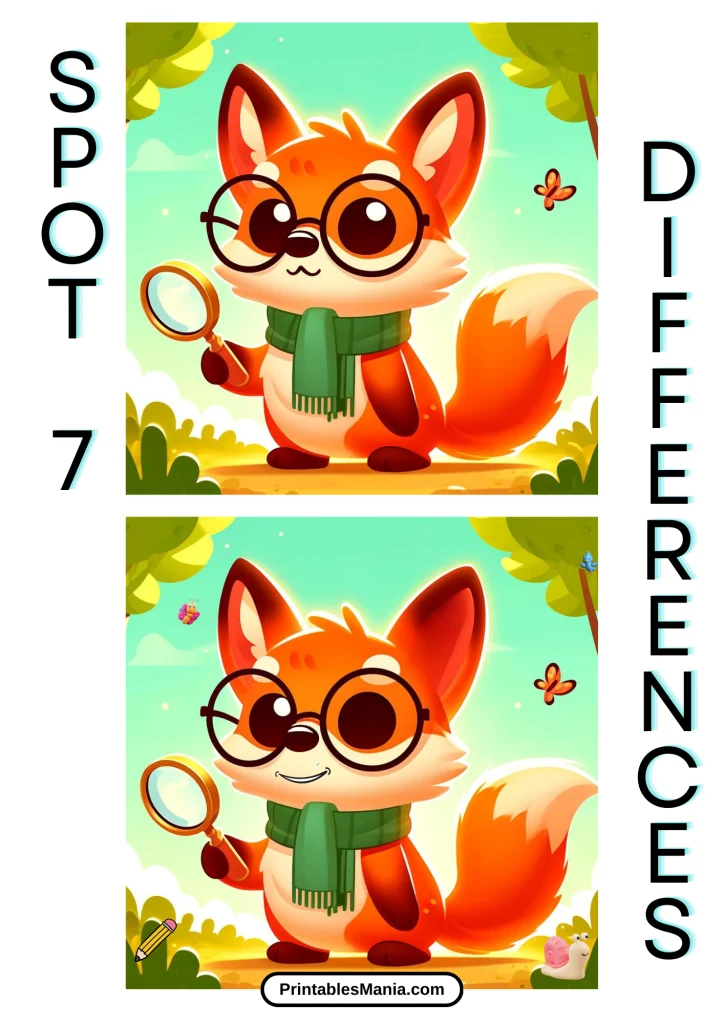
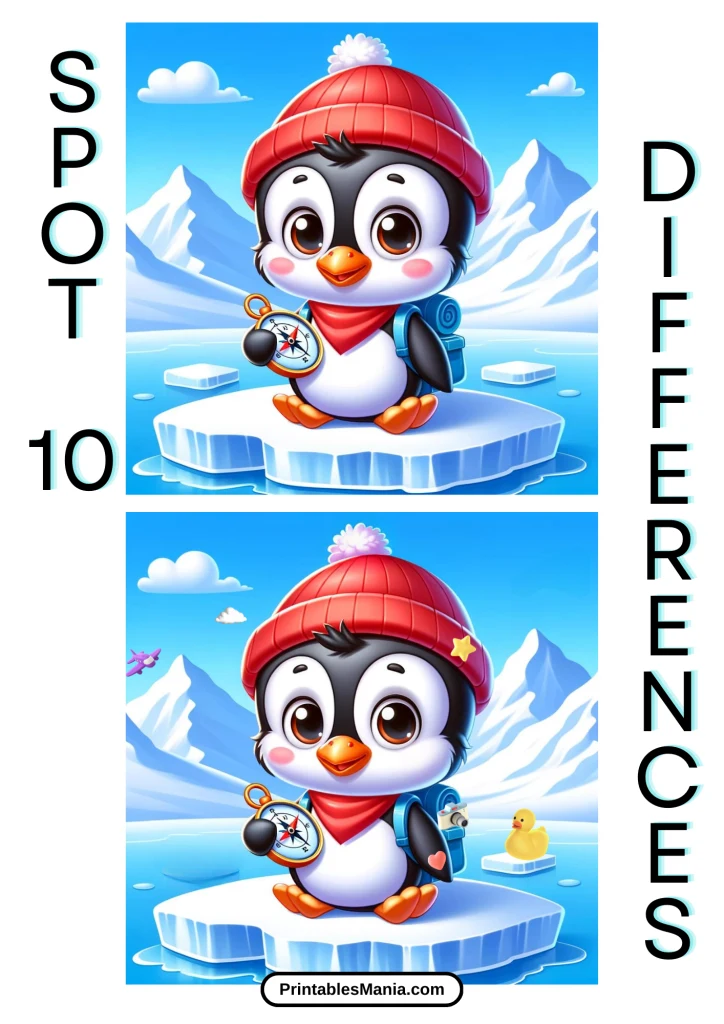
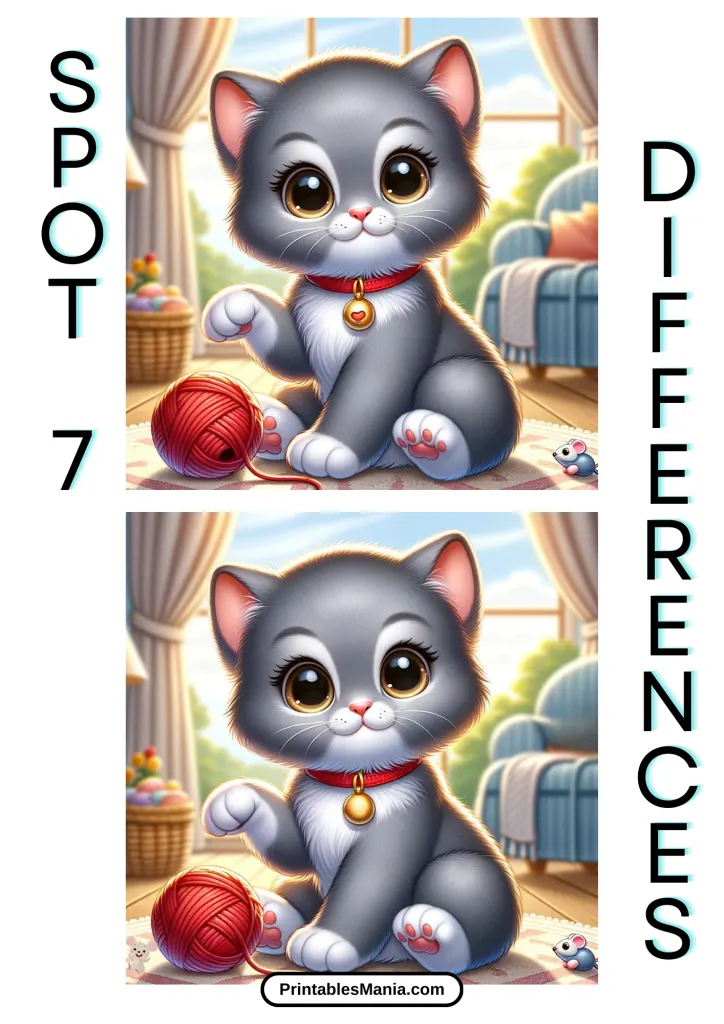
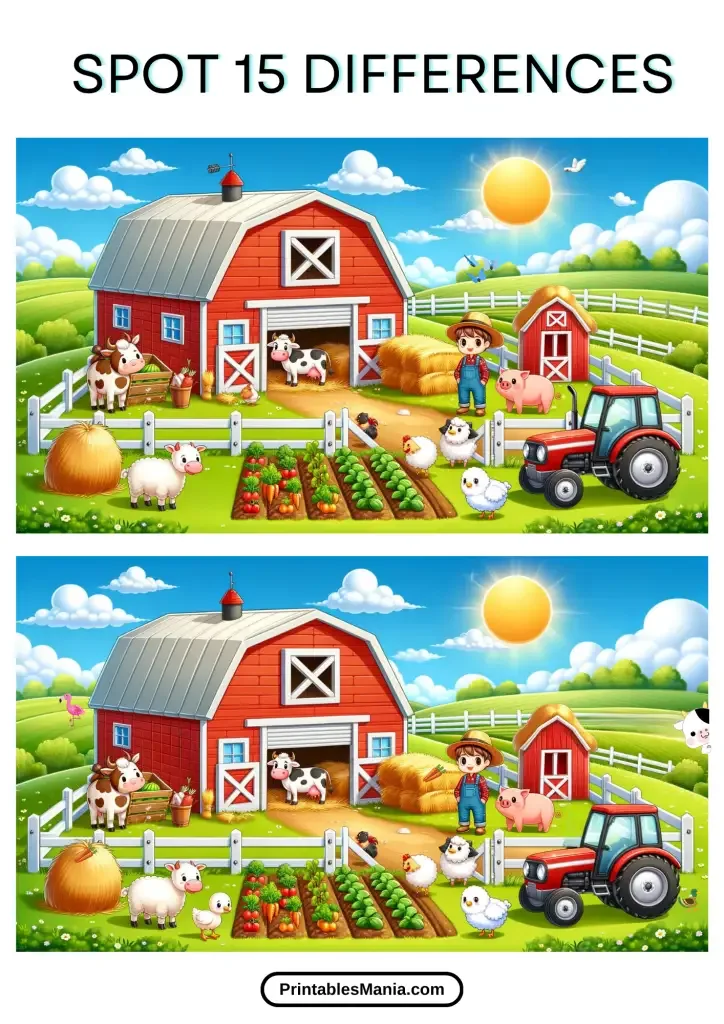
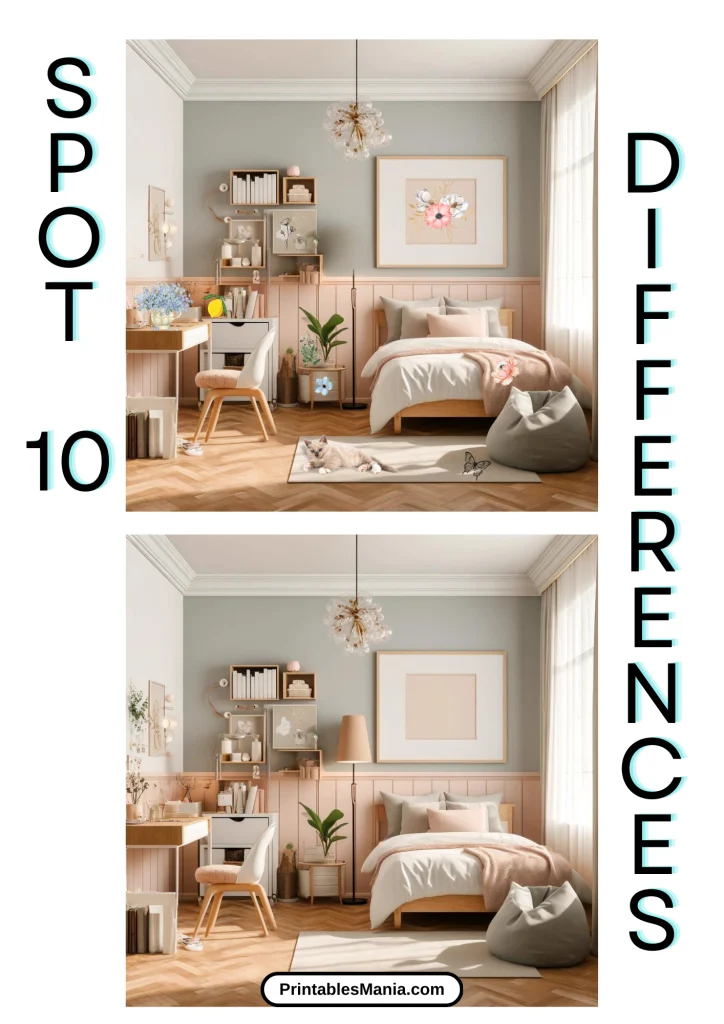
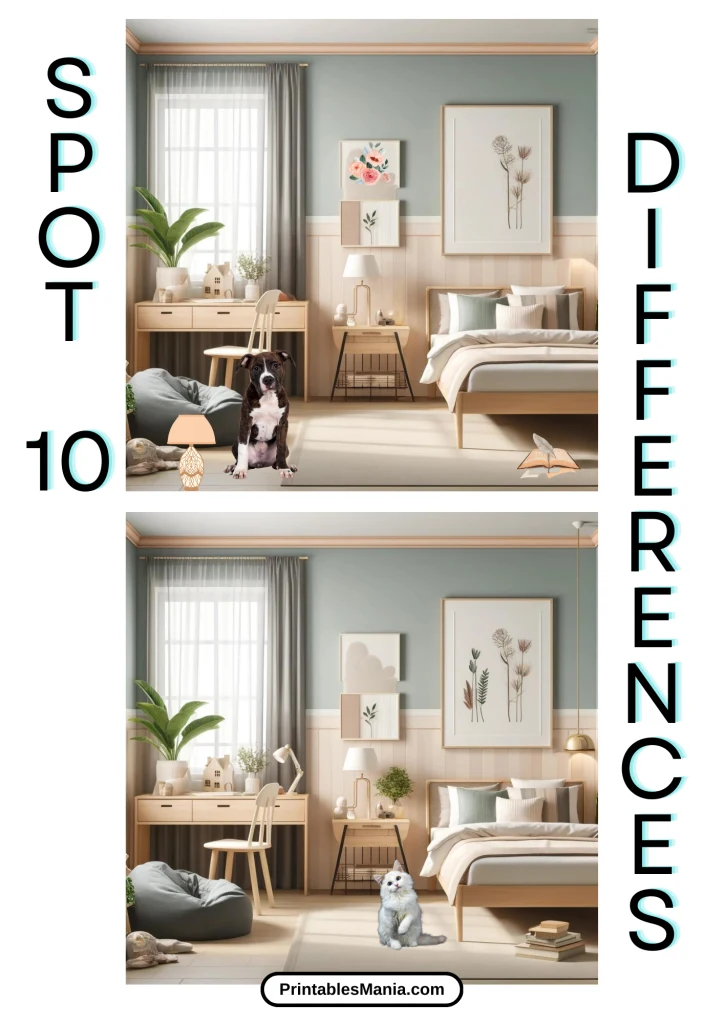
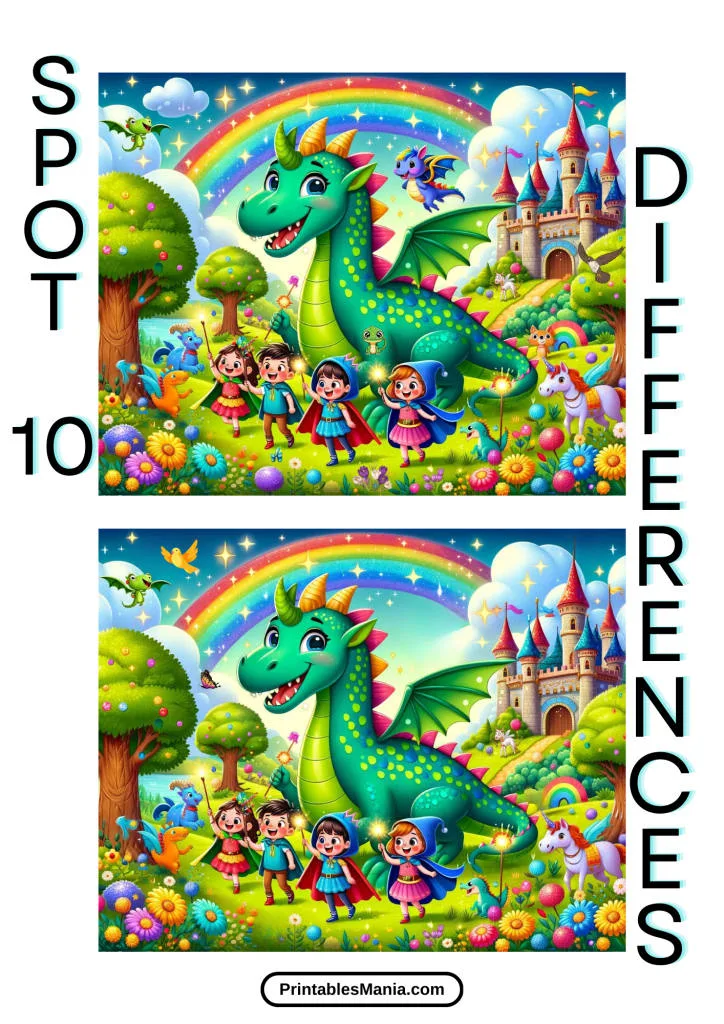
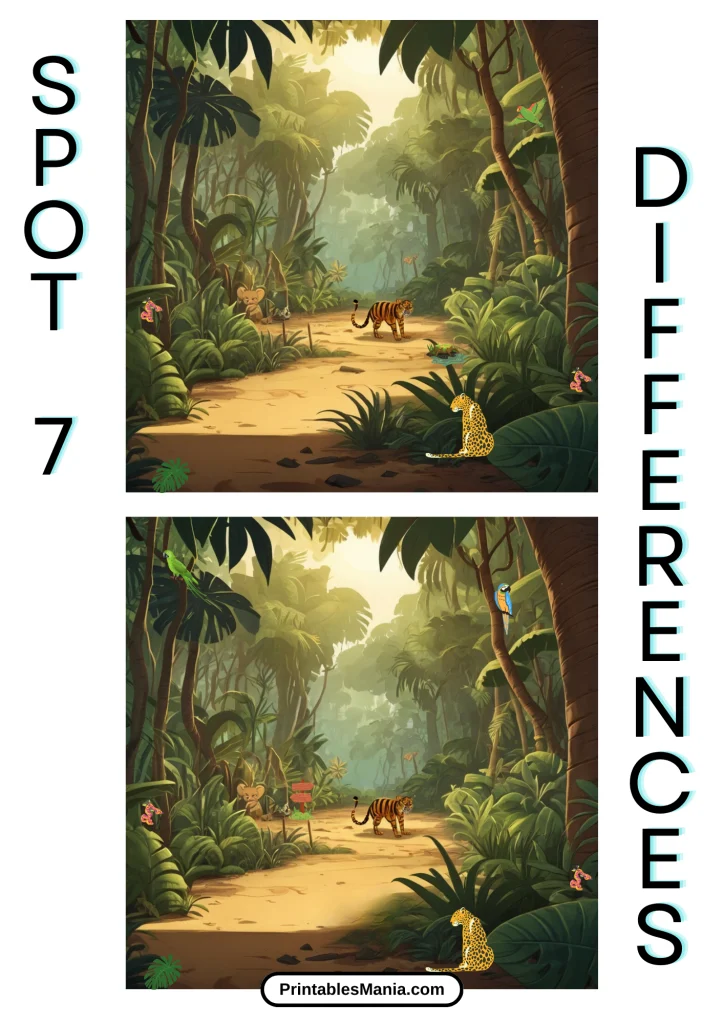
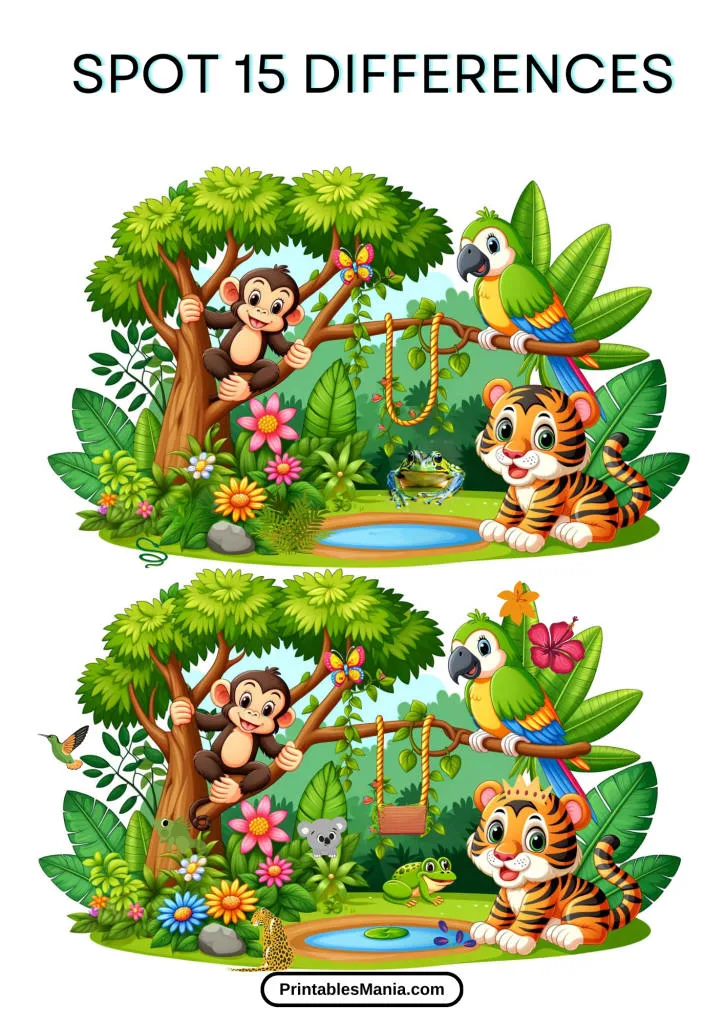
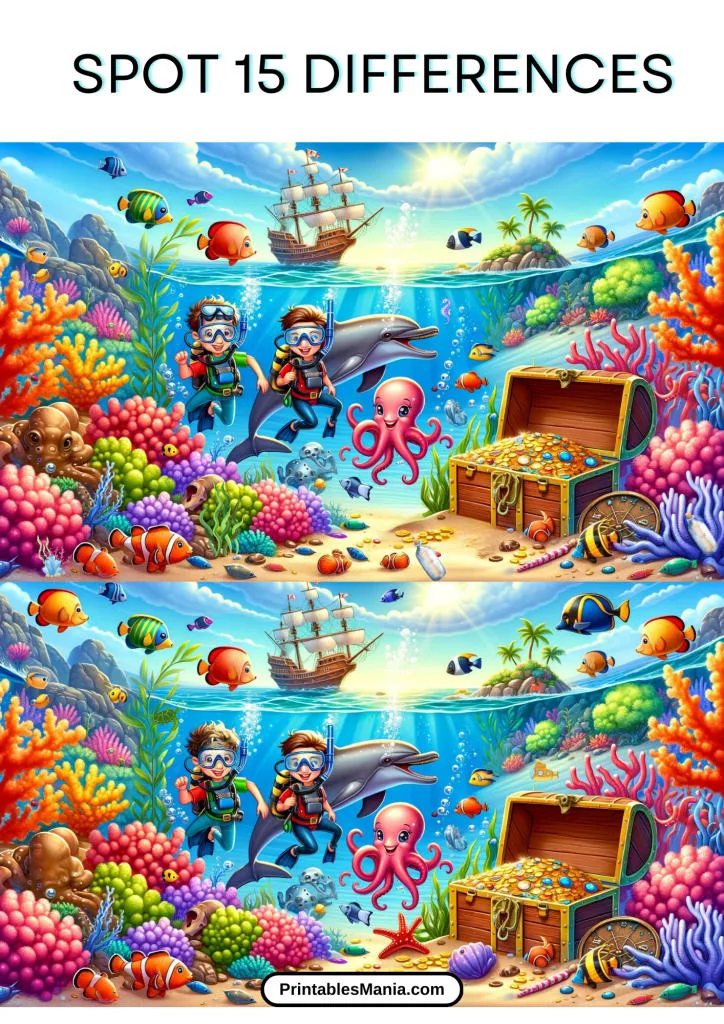
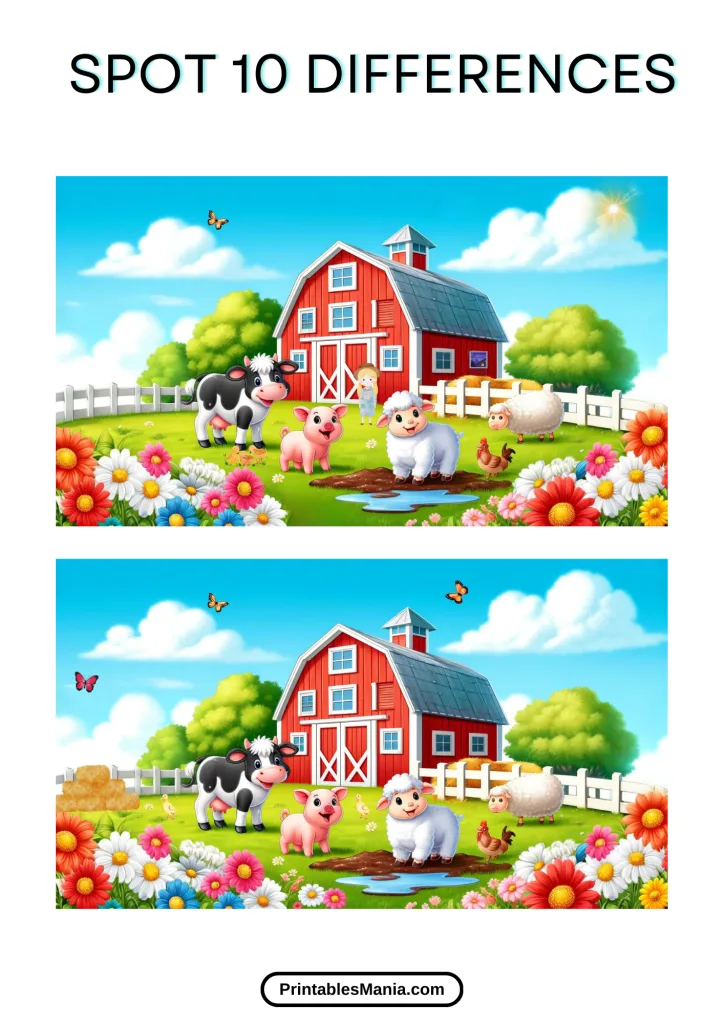
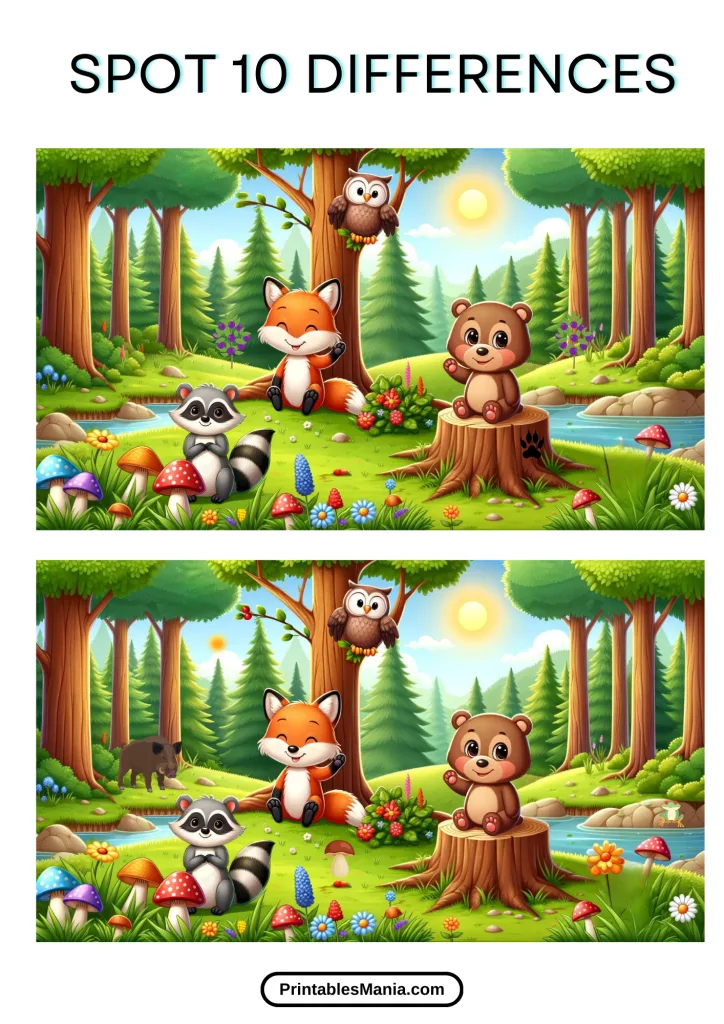
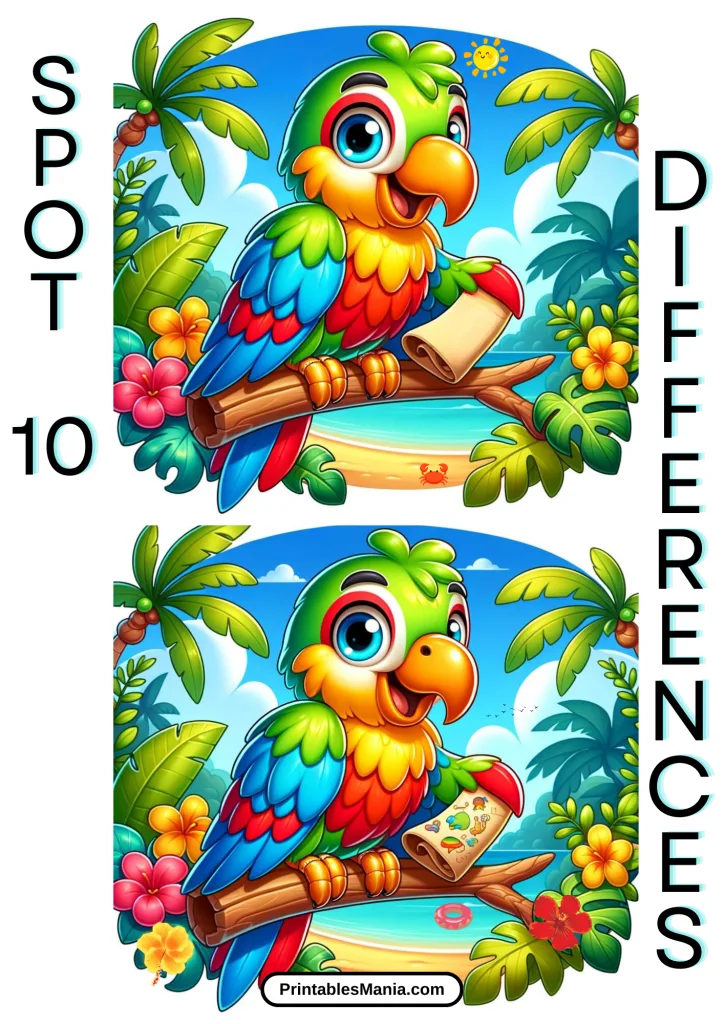
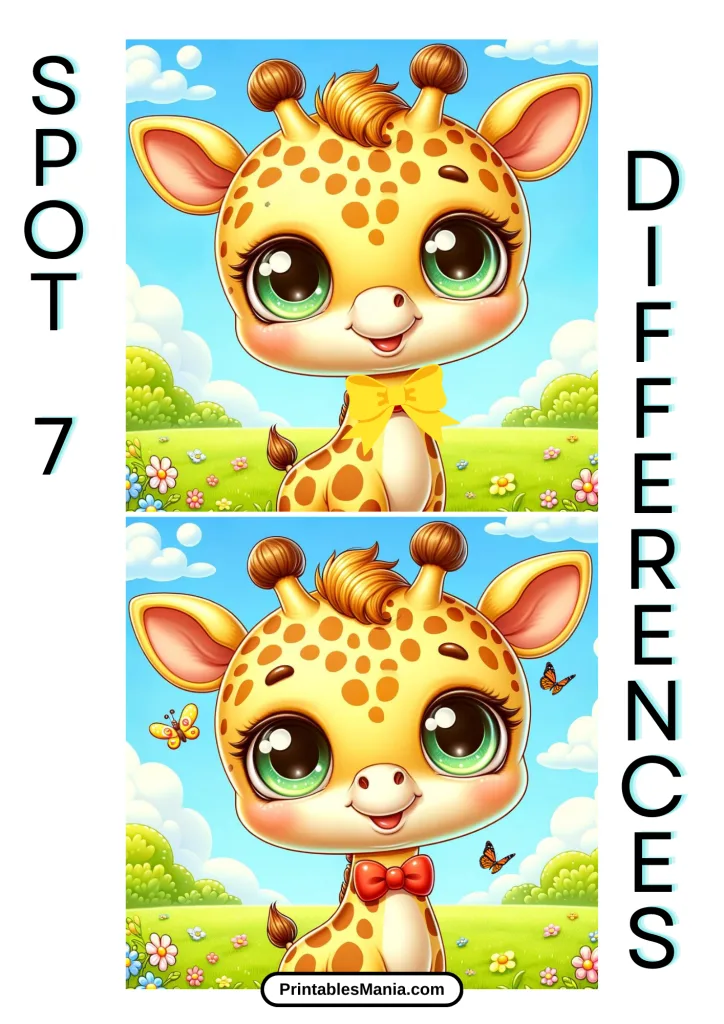
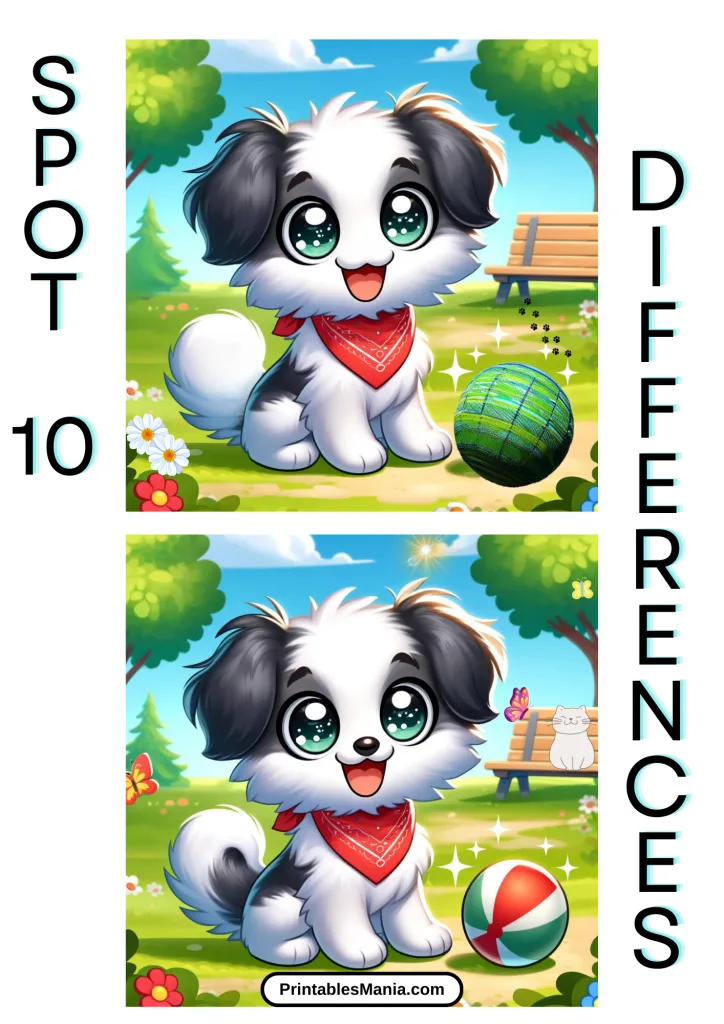

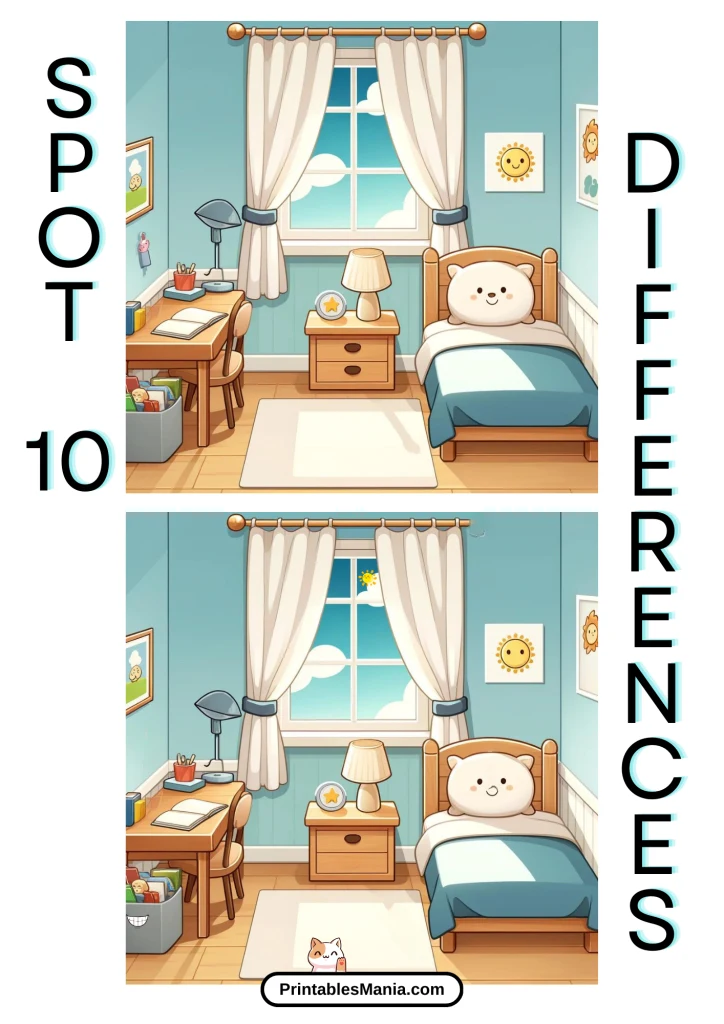
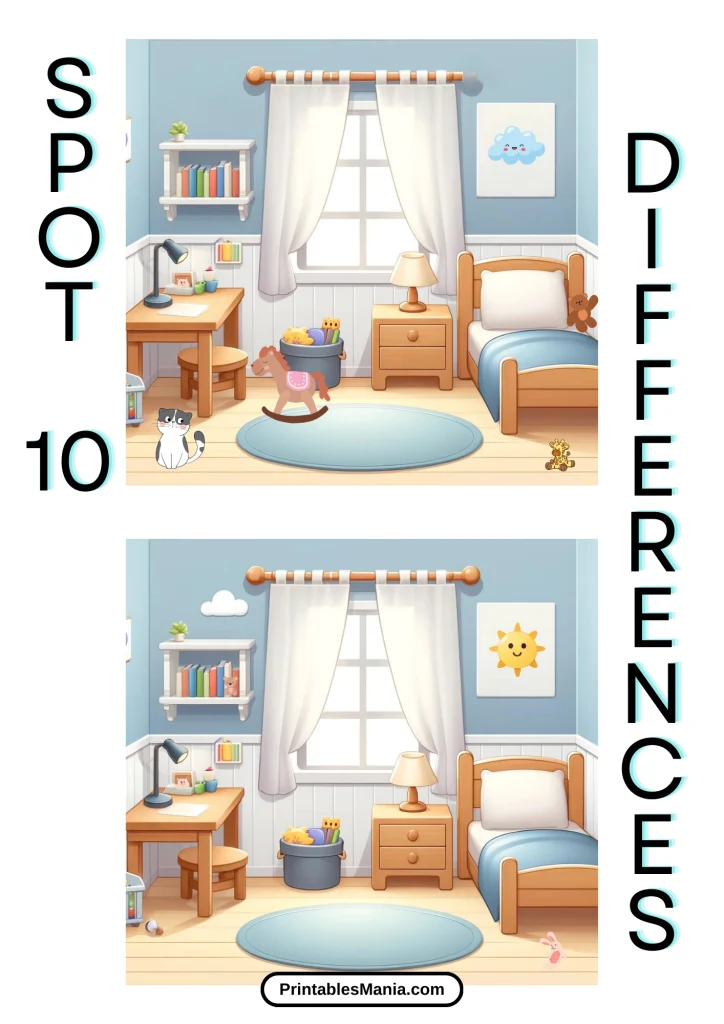
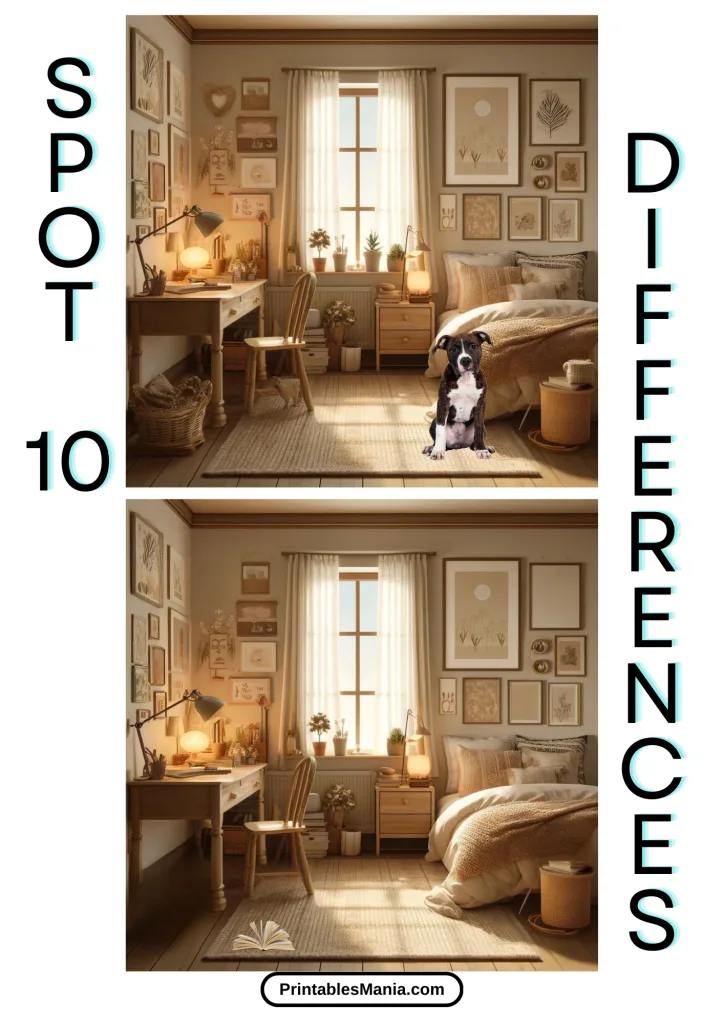
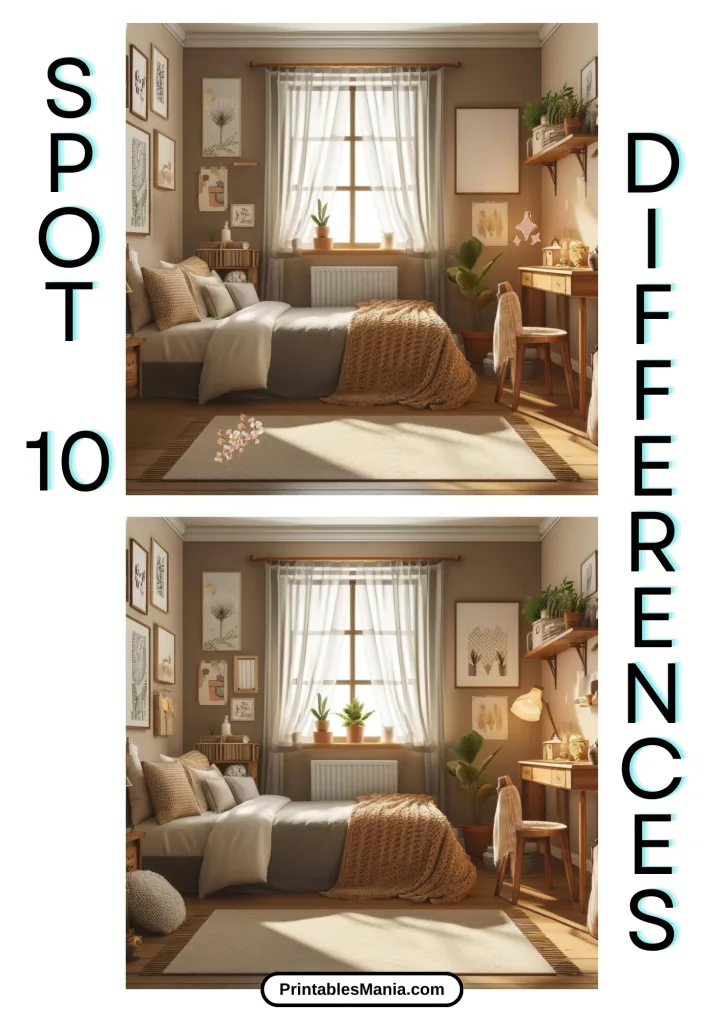
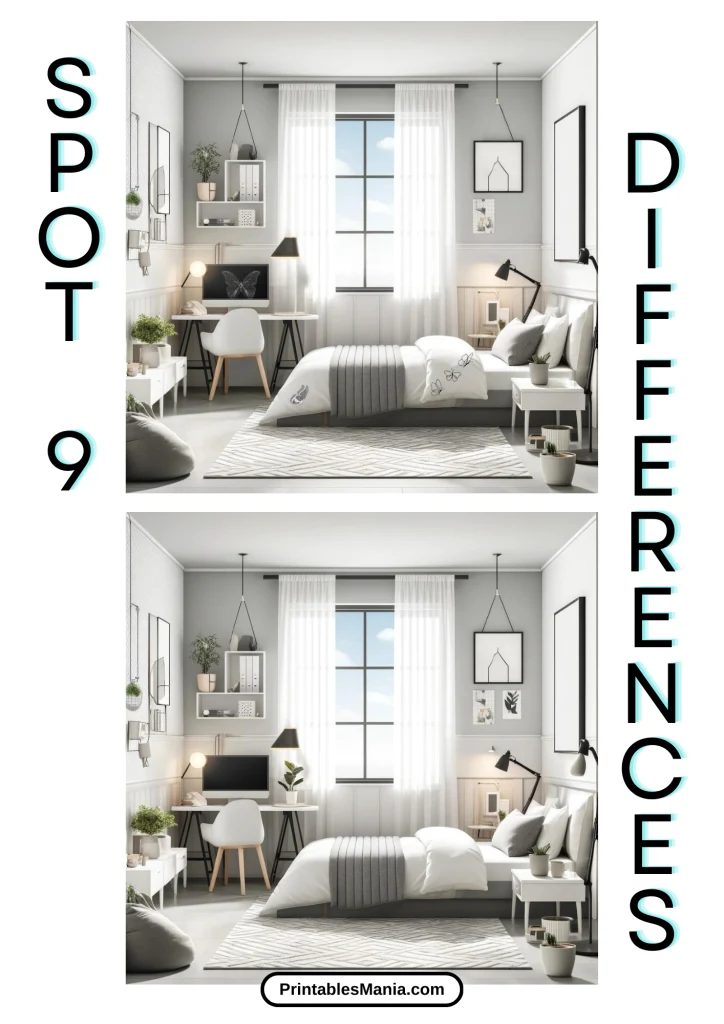
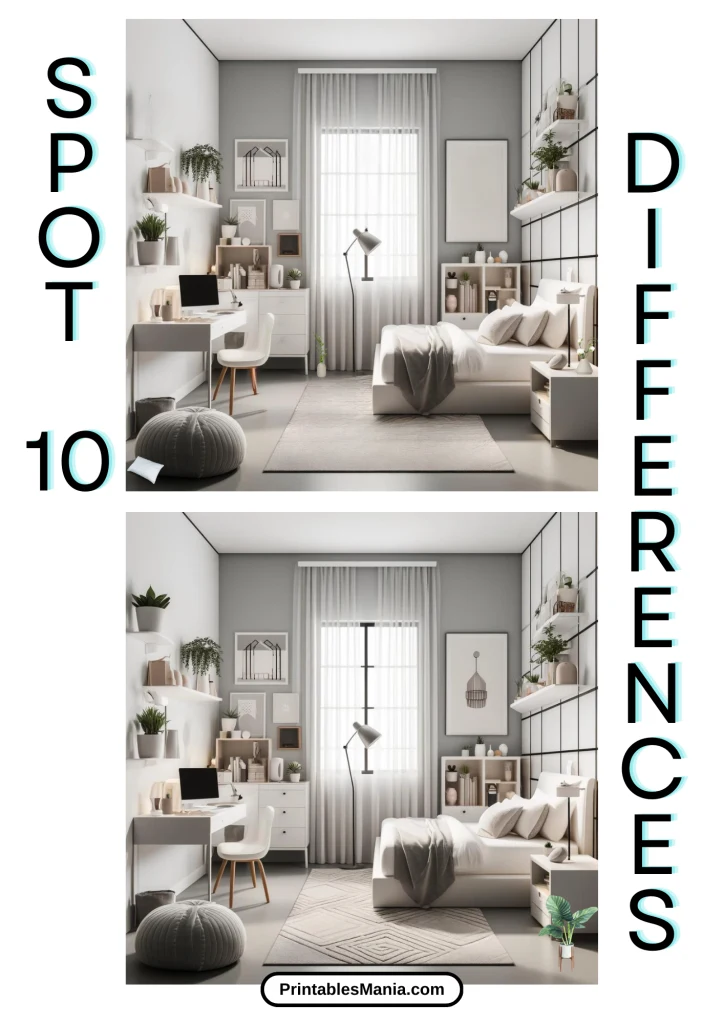
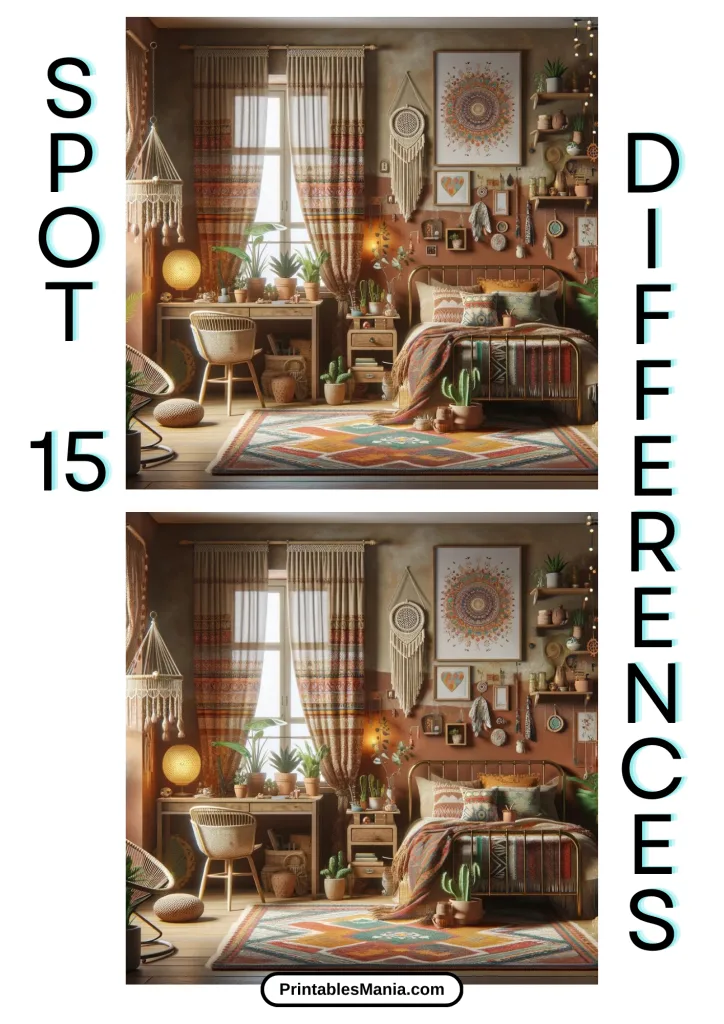
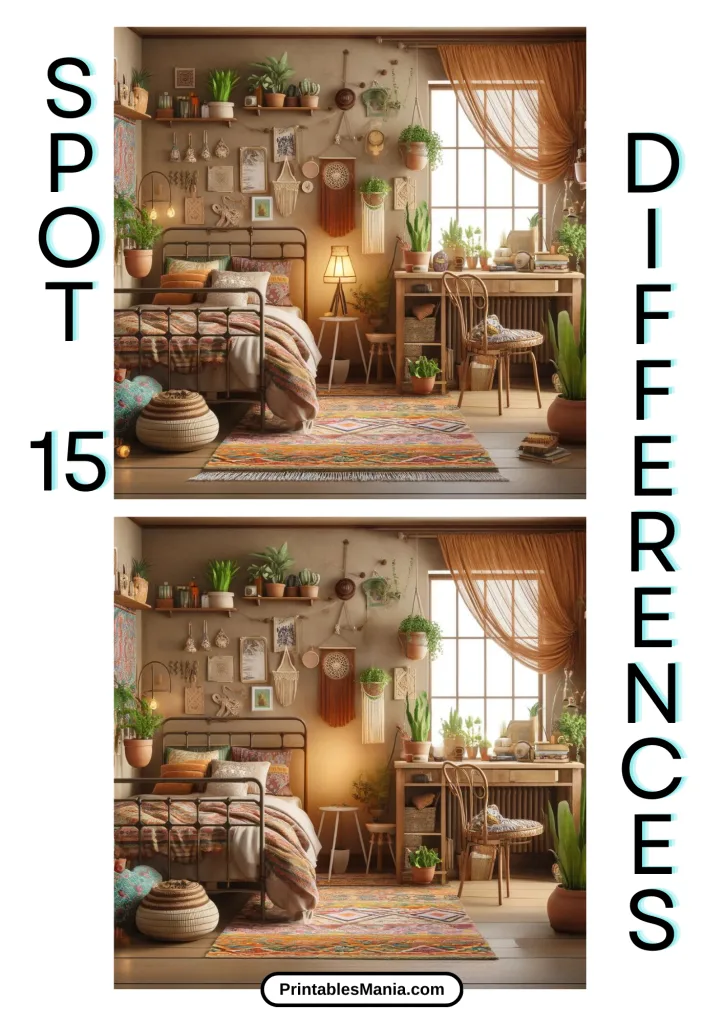
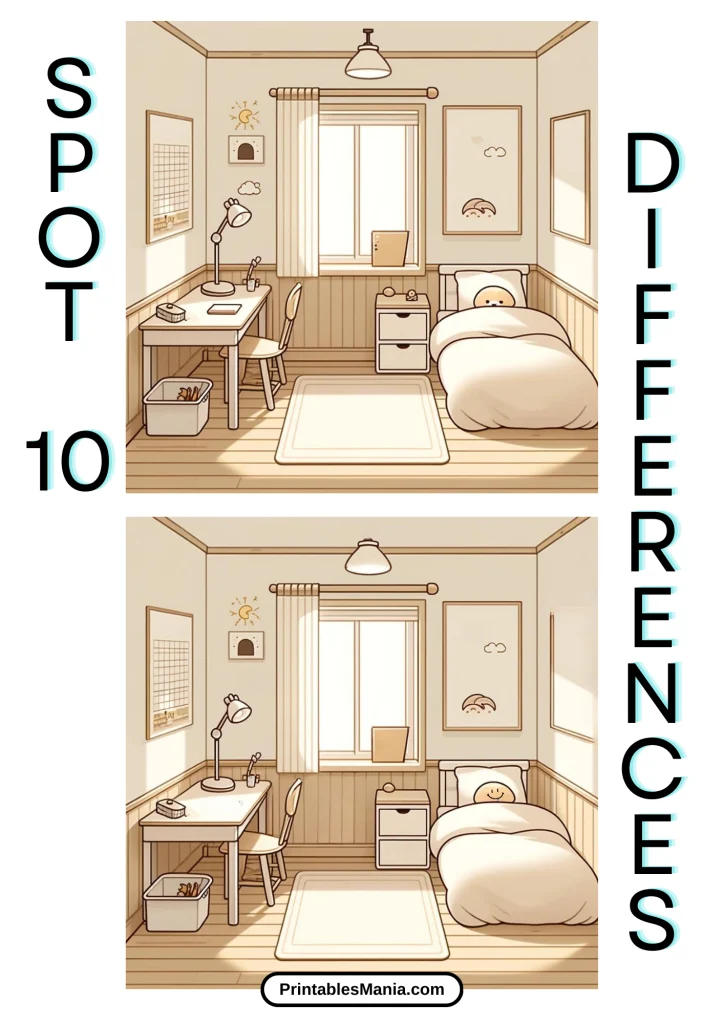
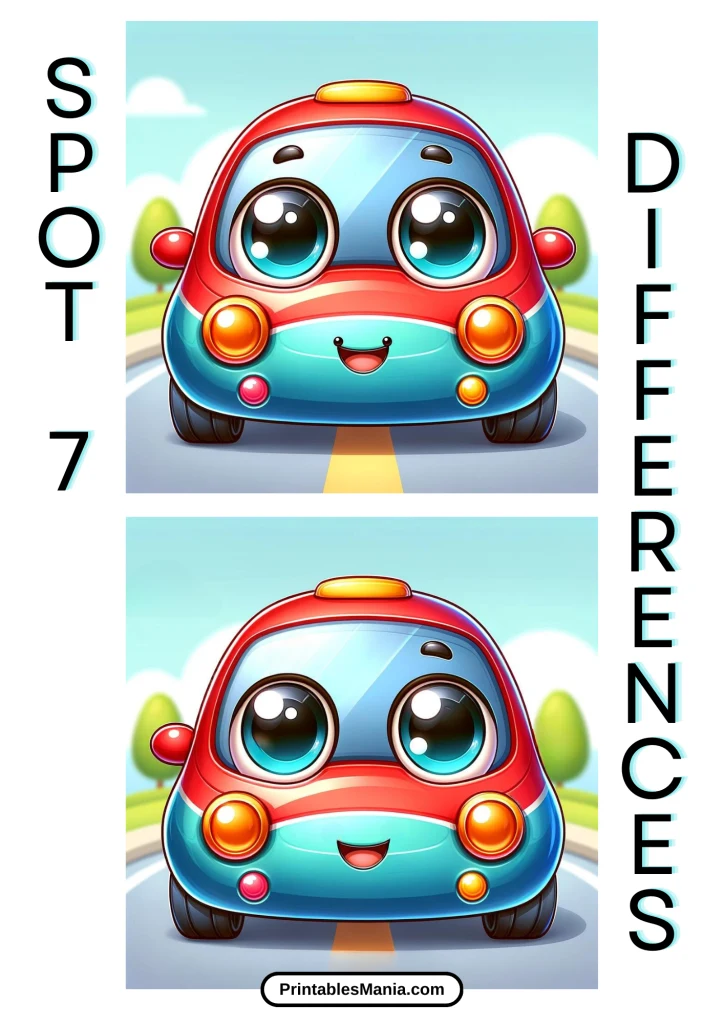
Educational Benefits
Spot the difference puzzles are more than just a fun activity—they also offer numerous educational benefits for people of all ages. Here are some ways these puzzles can help enhance cognitive skills and learning:
- Improves Visual Perception: By closely examining two similar images to find differences, players enhance their ability to notice subtle details and patterns, which is a crucial skill for reading and other visual tasks.
- Enhances Concentration: Solving these puzzles requires sustained attention and focus, helping to improve concentration over time. This skill is essential for academic success and everyday tasks.
- Boosts Memory: Regularly engaging with spot the difference puzzles can help improve memory and recall abilities. Players must remember the details they’ve already checked, which exercises their working memory.
- Encourages Patience and Perseverance: These puzzles teach patience and perseverance, as finding all the differences can sometimes be challenging. Players learn the value of taking their time and not giving up easily.
- Develops Problem-Solving Skills: Spotting differences involves critical thinking and problem-solving. Players must analyze each image and think creatively to identify the variations.
- Supports Hand-Eye Coordination: For younger children, circling the differences helps improve hand-eye coordination and fine motor skills, which are important for writing and other manual activities.
- Provides Relaxation and Stress Relief: Focusing on a fun, engaging task can help reduce stress and provide a sense of relaxation. It’s a great way to unwind and take a break from more demanding activities.
Spot the Difference Challenges
Ready to take your puzzle-solving skills to the next level? Try these spot the difference challenges for added fun and excitement:
- Timed Challenges: See how quickly you can find all the differences! Set a timer for 5 minutes and race against the clock to spot every variation between the images. Can you beat your previous best time?
- Compete with Friends: Print multiple copies of the same puzzle and challenge your friends or family to a race. Who can find all the differences first? This is a great way to add a competitive edge to your puzzle-solving.
- Blindfold Challenge: Work with a partner to complete the puzzle. One person describes the differences they see while the other, blindfolded, marks the changes based on the descriptions. This adds a fun twist and helps improve communication skills.
- Create Your Own Puzzle: Use our blank templates to create your own spot the difference puzzles. Draw two similar pictures with a few differences, and then challenge others to find them. This activity is not only fun but also boosts creativity.
- Double Difficulty: For an extra challenge, try puzzles with a higher number of differences or more subtle variations. These puzzles require sharper attention to detail and more advanced problem-solving skills.
- Puzzle Marathon: Set aside a block of time and see how many spot the difference puzzles you can complete in one sitting. Keep track of your progress and try to improve your number each time you take on the marathon.
These challenges add a fun and competitive element to spot the difference puzzles, making them even more engaging and beneficial. Whether you’re looking to improve your skills or simply enjoy a fun activity with friends and family, these challenges are sure to enhance your experience.

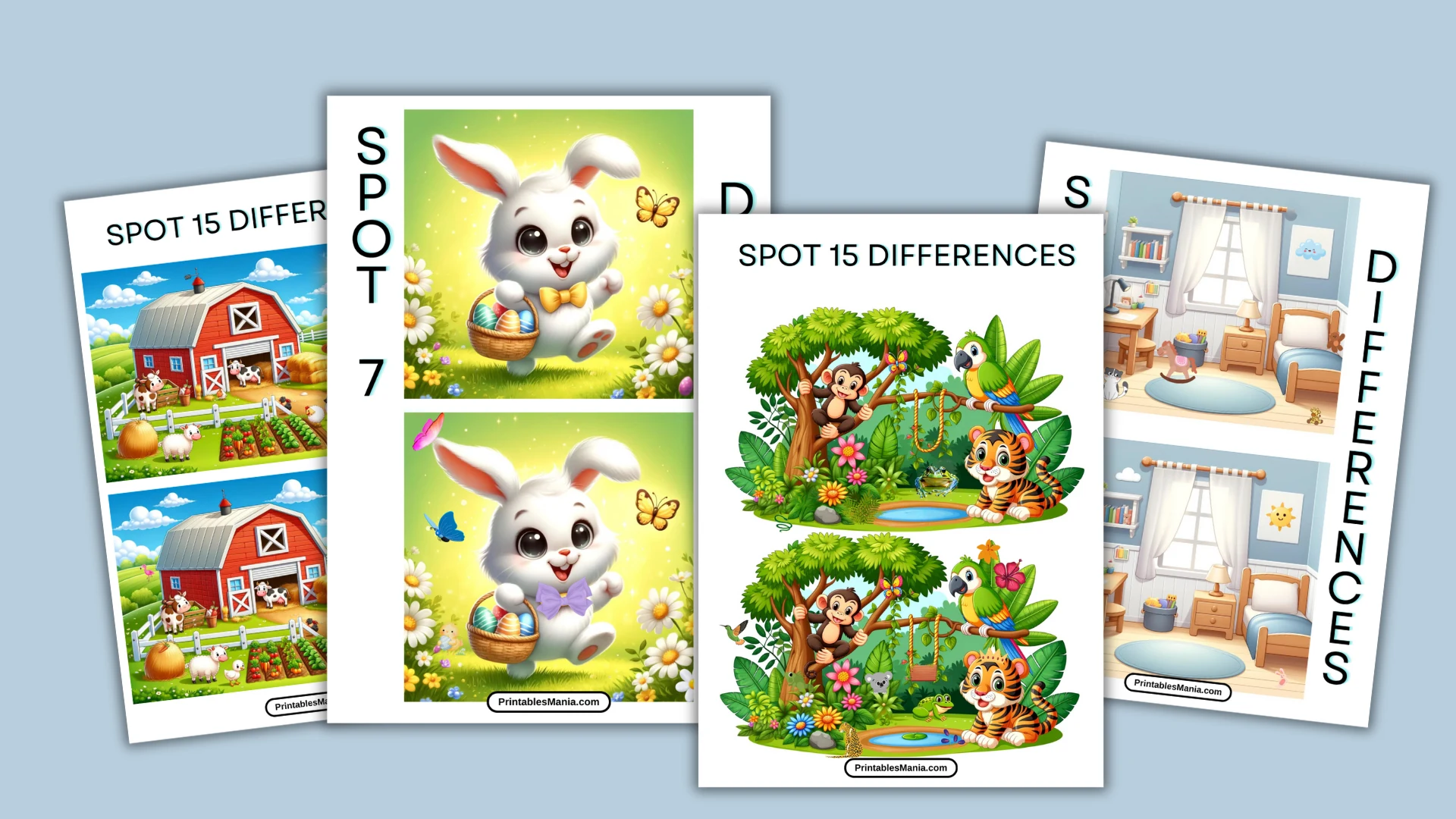
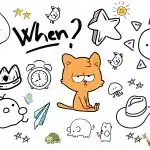
Emilia
Friday 6th of September 2024
Where can I find the solutions? They are not provided above. Please advise. Thank you in advance!
4. Check Your Answers: Once you’ve found all the differences, check your answers with the solution provided.